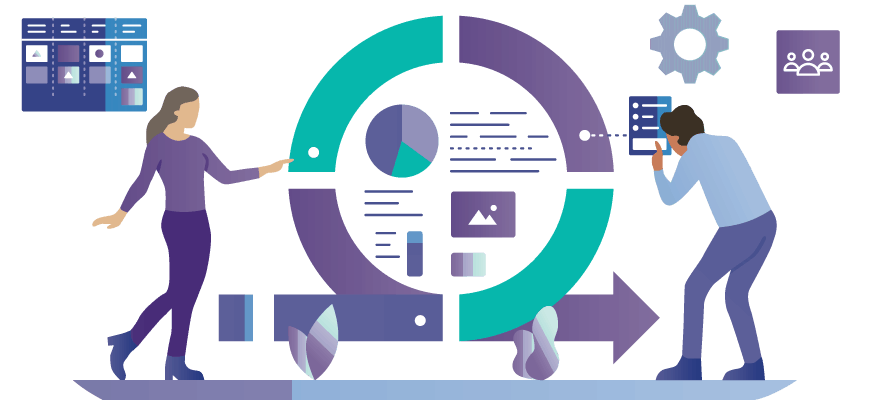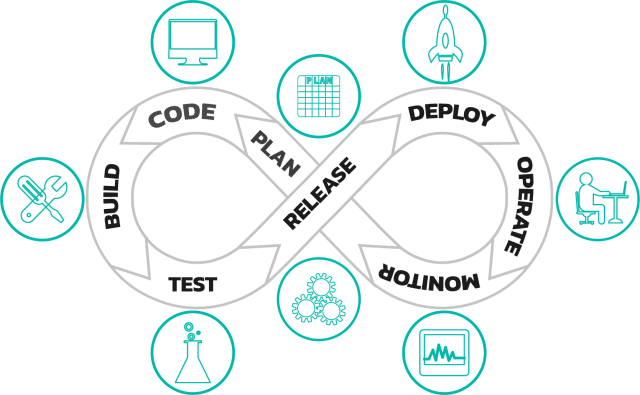10 Reasons to Use Agile Software Development
Well executed Agile software development methodology helps teams significantly improve the quality of their software at each release. Not only that, it allows teams to adapt to change quickly.
The Agile process consists of short, time-boxed iterations known as sprints. Each sprint results in a working product. The success of this method relies not only on shorter iterations but also on a level of collaboration amongst the team that is hard to find in traditional methodologies. Here are our top 10 reasons to use Agile for your mobile application testing and development efforts.
As customer demand drives product development, companies can no longer afford to allow process, procedure, and documentation to slow time to market. Such delays cost companies their competitive edge and ultimately, customers. Agile software development and testing help solve this problem by figuring out customer needs. Agile software development values working software over in-depth documentation, and stakeholder engagement, customer collaboration, and transparency over process.
Overview of Agile Methodology

The Agile software development methodology centers around time-boxed project cycles known as sprints. A sprint is a short period, usually two weeks, during which the team works on a set number of features called “user stories.” These stories are items that the team can deliver in two weeks. As such, the sprint consists of a significantly smaller number of features than a waterfall project. Limiting the features in this manner makes for a more manageable product development and release cycle.
An Agile team is much smaller than a traditional project team — ideally no more than 12 individuals. The team consists of developers, analysts, QA testers, the product owner, and the project manager, also known as the Scrum master. The product owner represents the interests of the stakeholders on the project and is available to the team throughout each sprint to answer questions and provide feedback. During a sprint, the team participates in daily stand up meetings where they discuss progress. At the end of the sprint, the team does a formal release and then begins a planning session for the next sprint.
Agile vs. Waterfall in Mobile Application Testing and Development
Before Agile, companies followed a more structured approach to mobile application development and testing. The approach, known as waterfall, carried projects through a preset sequence of steps from inception through completion. Each of these steps formed project phases, each of which consisted of a specific set of tasks. The waterfall approach, although effective, was process and documentation heavy. As such, teams didn’t have the adaptability needed to keep up with customer demand. In waterfall, any requirements modifications required an analyst to update the requirements document, which then needed to be reviewed and reapproved by the stakeholders. It was a process that caused delays and put the delivery deadline in jeopardy.

Agile software development minimizes, if not eliminates, these challenges. In Agile, teams work against a set number of user stories during a time-boxed cycle. During that time, the team focuses on releasing a workable product rather than process and documentation. As such, Agile projects can release new features rapidly and more frequently than a waterfall project.
Top 10 Reasons for Choosing Agile Software Development and Testing
1. Reduces Technical Debt
Technical debt refers to the maintenance tasks required to support the existing product. Those tasks include defect resolution, refactoring, and testing. In a traditional project methodology, this technical debt can accumulate quickly as the team focuses on new feature development to keep pace with the project timeline.
Agile software development helps keep technical debt to a minimum. Any defects, feature changes or other maintenance tasks are added to what is known as a product backlog. The team reviews the backlog during each sprint planning session to determine what to address next. Thus, each sprint is a new opportunity to fix defects along with new feature development.
2. Easily and Quickly Adapt to Change
Teams not only adapt to change in Agile, they are encouraged to embrace the practice. Agile acknowledges that customer needs change and that teams must be able to adapt. Working in time-boxed iterations means the team does not need to wait on a lengthy requirement change, review and approval process. Any change or maintenance item is added to the backlog and allotted to an upcoming sprint based on priority and business need.
3. Using Agile for Mobile Application Development and Testing Creates Total Alignment and Transparency
An Agile software development process requires a level of collaboration and involvement that one would not find in a traditional waterfall project. In waterfall, each phase often only involves a specific set of individuals with expertise to accomplish the tasks for that phase. However, Agile is quite different.
Before each sprint, the entire team reviews, validates, and agrees on which user stories to assign to the sprint. The developers, analysts, testers, and product owner work together to accomplish the items assigned to the sprint. The team meets daily to keep everyone on the same page. Throughout the sprint, each team member verifies each feature and works closely with the developers to ensure it meets the customer’s needs.
4. Agile Software Development and Test Minimize Risk
Although teams do their best to plan the phases of a waterfall project, there is often a level of uncertainty that isn’t typically found in Agile software development. The traditional approach to software development leaves product testing and release to the end of the project. Waiting until the end leaves the team unsure if the product meets the customer’s needs.
Using Agile for mobile application testing, teams get feedback almost daily and can act on that feedback immediately. Developing a product in sprints allows teams to quickly determine if they are on track and allows them to adjust almost immediately. Also, because sprints are customer-focused, the team can be sure they are producing value at every release.
5. Higher Quality Product
Waterfall methodology can negatively impact the quality of the product. In a waterfall methodology, project phases may be so full of features that developers must rush to complete them and little time is left for testing. As a result, they may not have the time needed for proper mobile application testing.
On an Agile project, the team does not attempt to develop all features at once. Instead, the team assigns a smaller subset of features to each sprint. That way, the developers have more time to perfect those items before release. Furthermore, Agile’s reliance on continuous integration (merging all developers’ working copies to a shared repository several times a day) gives developers the chance to test issues daily and address them immediately. Working on a product in small incremental releases ensures that each sprint results in a fully tested and working product.
6. Predictable Delivery Dates
Waterfall projects revolve around lengthy project cycles that make it difficult for teams to predict a release date accurately. Agile iterations happen in time-boxed sprints that result in a working product at each release. Thus, the product owner knows that they will get new features at the end of every sprint.
7. Better Stakeholder Engagement
For Agile software development to be successful, it is important for the product owner to be engaged throughout the process. Unfortunately, that level of engagement doesn’t happen in waterfall projects. In a waterfall project, stakeholders aren’t inclined to participate past the requirements gathering phase and only re-engage during user acceptance testing (UAT). Unlike waterfall, product owners are very active participants in Agile sprints. This level of involvement gives them a sense of ownership that encourages further engagement.
8. User-Focused Testing
Agile is about more than just adapting to change. It is about delivering what is most important to the customer. As such, the product owner works closely with the team to help them gain a clear understanding of what is needed. In Agile software development, user requirements are represented as “user stories.” These stories define an action that provides value to the customer. The concept of user stories is a stark contrast to the rather lengthy list of requirements developed in a traditional development methodology.
9. Greater Customer Satisfaction
The product owner actively participates in the sprints during the Agile development and testing process. Their participation in this manner ultimately fosters a level of engagement that ensures their needs are being met. Not only that, they get to see a working product at the end of each sprint and will be pleased that their team can deliver releases more quickly and frequently.
10. Better Project Control
Teams work together, along with the product owner, to determine what goes into each sprint. That way, the team is on the same page about what needs to be delivered. Also, there is less of a chance of surprises or unplanned features making it into the build.
Daily standup meetings keep everyone aware of project status so issues can be addressed quickly. Planning meetings allow teams to prepare for the upcoming sprint. Retrospectives help the team learn from prior sprints and apply new methods to improve in future sprints.
Agile software development and testing follow a process that helps teams deliver a working product that provides value at the end of each sprint. Embracing change is one of the core tenets of the process. With Agile software development, teams can quickly adapt to requirements changes without negatively impacting release dates. Not only that, Agile helps reduce technical debt, improve customer satisfaction and deliver a higher quality product. Contact one of our testing experts today to learn how we can help you in your mobile application testing efforts.
